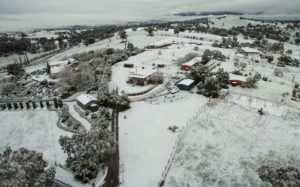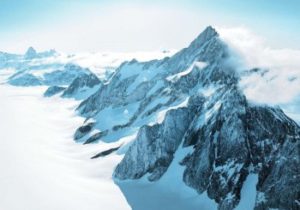by La Tribune Afrique, 16 août 2019
Le Congo dispose de 2 milliards de barils de réserves de pétrole prouvées provenant d’une vingtaine de champs en cours d’exploitation. La récente découverte de pétrole onshore devrait redessiner le futur de l’industrie congolaise des hydrocarbures.
La récente découverte onshore faite dans le gisement du Delta de la Cuvette en République du Congo change la donne pour le Congo et l’Afrique. La découverte a été annoncée le 10 août par SARPD Oil et PEPA, un consortium congolais travaillant en tant qu’opérateurs du bloc.
Les premières projections indiqueraient que les gisements découverts pourraient produire jusqu’à 359 millions de barils de pétrole, soit 983 000 b/j. Cela pourrait quadrupler la production du Congo, qui se situe actuellement à plus de 330 000 barils/jour, selon les derniers chiffres de l’Opep. Le gouvernement lui s’est fixé comme objectif un volume de production de 400 000 barils/jour d’ici 2020.
«Il s’agit de notre première découverte onshore et elle nous laisse beaucoup d’espoir que nous ferons plus de découvertes, en particulier maintenant que nous allons attribuer plus de blocs pour l’exploration pétrolière dans le cycle de licences en cours», a expliqué Jean-Marc Thystère-Tchicaya, ministre congolais des Hydrocarbures dans une déclaration rapportée par la Chambre africaine de l’Energie.
Troisième producteur du Continent
….
by Peter Ridd, August 12, 2019 in GWPF
The scare stories about the Great Barrier Reef started in the 1960’s when scientist first started work on the reef. They have been crying wolf ever since.
Scientists from James Cook University have just published a paper on the bleaching and death of corals on the Great Barrier Reef (GBR) and were surprised that the death rate was less than they expected because of the adaptability of corals to changing temperatures. It appears as though they exaggerated their original claims and are quietly backtracking. To misquote Oscar Wilde, to exaggerate once is a misfortune, to do it twice looks like carelessness, but to do it repeatedly looks like unforgivable systemic unreliability by some of our major science organisations.
It is a well-known phenomenon that corals can adapt very rapidly to high temperatures and that if you heat corals in one year, they tend to be less susceptible in future years to overheating. It is the reason why corals are one of the least likely species to be affected by climate change, irrespective of whether you believe the climate is changing by natural fluctuations or from human influence.
…

by Cap Allon, August 12, 2019 in Electroverse
Regions just 90 minutes from Sydney received extremely rare snow over the weekend, as an intense cold front released from the Antarctic pushed north past Tasmania.
Blackheath resident Erica Mann was ecstatic to find fresh white powder falling in her garden, saying it was the most snow she had ever seen there:
“I opened the curtains and I could see a huge amount of snow on top of the water tank — it was so exciting,” she said. “It’s amazing. I went up the street … and all the houses are completely covered in snow.”
Residents in the Riverina also received a dumping of snow, with some towns recording their first falls in decades. Cootamundra local Steve Theobald said the last time he remembered snow there was 1985(solar minimum of cycle 21), while residents in Tumut –just 300 metres above sea level– said it was their first fall since 2000.
Other towns in southern NSW which recorded rare snow include Adelong, Harden and Batlow.
The powder continued falling through Sunday and finally began abating on Monday.

…
See also here (in French)
by US Geological Survey, August 8, 2019 in ScienceDaily
Scientists have taken the temperature of a huge expanse of seafloor in the Arctic Ocean in new research by the U.S. Geological Survey and the Geological Survey of Canada. The study, published in the Journal of Geophysical Research, is accompanied by the release of a large marine heat flow dataset collected by the USGS from an ice island drifting in the Arctic Ocean between 1963 and 1973. These never-before-published data greatly expand the number of marine heat flow measurements in the high Arctic Ocean.
Marine heat flow data use temperatures in near-seafloor sediments as an indication of how hot Earth’s outer layer is. These data can be used to test plate tectonic theories, provide information on oil and gas reservoirs, determine the structure of rock layers and infer fluid circulation patterns through fractures in those rock layers.
…
by C. Martz, August 12, 2019 in ClimateChangeDispatch
As I’m sure many of my readers are aware, Europe has been having an odd summer as far as temperatures are concerned. The continent has had two major heatwaves this summer; one was in June and the other was in July.
In addition, Greenland has also seen some exceptional “warmth” and lots of ice melt this summer as compared to more recent years.
So, what’s going on? Is climate change to blame? Or, is this a freak of nature?
As with most complicated things in science, the truth is somewhere in between and is not just one way or the other. I hate saying that as a “black and white” person, but it’s an unfortunate fact. One can not make a preconceived notion based on one weather event without looking at a.) the big picture, b.) mechanism, and c.) long-term trends.
The upper air pattern over Europe and Greenland is opposite of what’s been occurring in much of the United States. The U.S. has only had one major heatwave this year, and that in and of itself caused mass hysteria.
…

…
La géologie, une science plus que passionnante … et diverse



